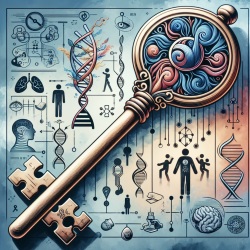Understanding Adolescent Depression: Insights from Neuroscience
Adolescent depression is a pressing public health issue, characterized by its early onset and long-term impacts on individuals, families, and communities. According to research, including the comprehensive review by Henje Blom et al., there is an urgent need to understand the neuroscience and contextual factors that contribute to this condition. This understanding can inform more effective prevention and treatment strategies.
Neuroscience of Adolescent Depression
The study of adolescent depression has increasingly focused on the brain's neurocircuitry, particularly the amygdala and the subgenual anterior cingulate cortex (sgACC). Research utilizing functional magnetic resonance imaging (fMRI) has shown that adolescents with depression often exhibit hyperactivation in these areas. This hyperactivation is associated with heightened emotional reactivity and impaired cognitive control, which are hallmark symptoms of depression.
Moreover, resting-state functional connectivity (RSFC) studies have revealed abnormal connectivity patterns between the amygdala and other brain regions involved in emotion processing and regulation. These findings suggest that the neurocircuitry of adolescent depression is distinct and should be a target for future interventions.
Contextual Factors
Beyond the biological underpinnings, contextual factors play a significant role in adolescent depression. Early life stress, lack of social support, and adverse environmental conditions can exacerbate the risk of developing depression. The modern world's fast-paced lifestyle, increased media exposure, and technological engagement have also been linked to rising depression rates among adolescents.
Furthermore, climate change and its psychological impacts, such as anxiety and stress, are emerging as significant factors affecting adolescent mental health. Addressing these contextual elements is crucial for developing comprehensive prevention and treatment strategies.
Implications for Practitioners
Practitioners can leverage these insights to enhance their approach to treating adolescent depression. By integrating knowledge of the neurocircuitry involved, therapists can tailor interventions that target specific brain regions. Additionally, acknowledging the role of contextual factors allows for a more holistic approach to treatment, addressing not just the symptoms but also the underlying causes of depression.
Novel treatment models, such as Training for Awareness Resilience and Action (TARA), are emerging. These models incorporate neuroscientific insights and focus on improving emotion regulation and cognitive control through practices like mindfulness and yoga-based techniques.
Encouraging Further Research
While significant progress has been made, there is still much to learn about adolescent depression. Practitioners are encouraged to stay informed about the latest research and consider how these findings can be applied in clinical settings. Continued research and collaboration across disciplines are essential to develop more effective prevention and treatment strategies.
To read the original research paper, please follow this link: The neuroscience and context of adolescent depression.










